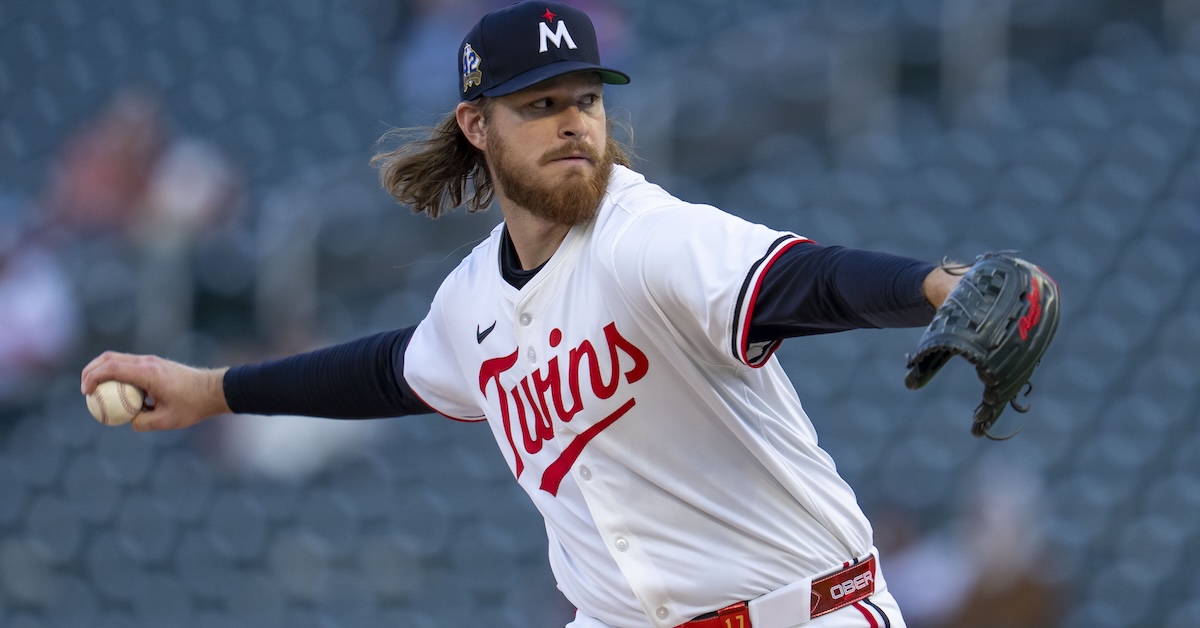Bailey Ober Addresses His December 2019 FanGraphs Scouting Report

Bailey Ober wasn’t highly regarded when our Minnesota Twins Top Prospects list was published in December 2019. The towering 6-foot-9 right-hander was ranked no. 40 with a 35+ FV. And our prospect-analyst team at the time wasn’t alone in having relatively low expectations for him. Baseball America’s 2020 Prospect Handbook didn’t include Ober in its 30-deep rankings of the Twins system, nor did MLB Pipeline find room for him in its own top 30.
Yet despite the lack of hype, Ober is now a mainstay in Minnesota’s rotation. A 12th-round pick out of the College of Charleston in 2017, he made his major league debut in May 2021, and he’s since gone on to log a 3.76 ERA and a 3.89 FIP over 95 starts comprising 510 innings. So far this season, Ober has toed the rubber seven times and has a 4-1 record to go with a 3.72 ERA and a 3.85 FIP.
What did his FanGraphs scouting report look like at the time? Moreover, what does he think about it all these years later? Wanting to find out, I shared some of what Eric Longenhagen and Kiley McDaniel wrote, and asked Ober to respond to it.
———
“There’s very little precedent for someone with Ober’s velocity having big league success, but it’s clear why his mid-80s fastball has been dominant to this point.”
“That was the year my velo dipped way down,” Ober said. “I was 92-94 before that. My mechanics were terrible. We were trying to work on some stuff and it just went in the wrong direction. But I also had the best success I’d ever had, stats-wise. My ERA was [0.69] that season, which is why no one was in a rush to change anything. I was able to blow guys up with 88 mph.”
“His size and deceptive overhand release point create tough angle on his stuff.”
“Yeah, I was throwing a little bit more over the top,” Ober explained. “I had a little bit of a funkier delivery. My extension was playing a huge part of that. My fastball was getting on guys. They weren’t expecting it to really stay true and carry, so it would beat them.
“In 2020, I obviously didn’t get to play because of the COVID situation,” he added. “I spent that whole year revamping, fixing the mechanical stuff and getting my velo back to where it was before. I was able to do so, and was lucky enough to get added to the 40-man roster.”
Asked if his release point dropped down, the analytically savvy righty said that it did, although he doesn’t know the exact number. According to Baseball Savant, it dropped to more of a three-quarters slot rather than the over-the-top release point he’d had at the time of his FanGraphs scouting report. In 2021, Ober’s first season after dropping his release point, his arm angle was 36 degrees. His lowest seasonal release point was 31 degrees in 2023. So far this year, it’s 34 degrees.
“He misses bats at the top of the zone.”
“It was probably my approach angle,” he reasoned. “My release point, too, and the extension. Being able to throw from that angle, at my height… guys just don’t see that. They weren’t used to it, so 88 maybe felt like 92-93-94.”
“Ober also has a plus changeup.”
“It’s still there,” he said of his primary offspeed pitch. “It’s a variation, but kind of the same grip. The way I throw it… it’s just a different part of the ball. It’s spinning on a different axis, basically. But it’s been my best pitch since high school. I had it all the way through the minor leagues, and then when I made those initial changes going into 2021, I kind of fought it. I kind of lost it my rookie year, but then I got it back toward the end of 2022. I use my changeup a lot.”
“It might work in a relief role.”
“I guess I am [exceeding expectations],” Ober said. “I think that’s always been the case.”
——
Previous “Old Scouting Reports Revisited” interviews can be found through these links: Cody Bellinger, Matthew Boyd, Dylan Cease, Matt Chapman, Erick Fedde, Kyle Freeland, Randal Grichuk, Ian Happ, Jeff Hoffman, Matthew Liberatore, Sean Newcomb, Max Scherzer.
David Laurila grew up in Michigan's Upper Peninsula and now writes about baseball from his home in Cambridge, Mass. He authored the Prospectus Q&A series at Baseball Prospectus from December 2006-May 2011 before being claimed off waivers by FanGraphs. He can be followed on Twitter @DavidLaurilaQA.
Mixing speeds, changing eye levels, and a unique delivery. This is my favorite type of SP – the Ober and Imanaga archetype. Seth Lugo. You don’t need to throw 97 with a ton of ride and have a spin rate gyro slider or video game sweeper.
Just throw first pitch strikes, live on the edges, and keep hitters guessing. Living in the lower end of the velo band in today’s game may even be an advantage (worth researching). And if availability is a valuable ability to GMs, then low-velo studs like Ober should be extremely valuable.
Because of his height Ober gets really good extension though, which allows his velocity to play up. Without that, I’m not sure he succeeds to this extent. I also remember that he dealt with a few injuries his first couple of seasons, but he has been pretty durable since then – and no arm injuries (fingers crossed).
I agree with I Like Big Buxton. A big reason (pun not intended) Ober has succeeded is by utilizing his size to get good extension off the rubber. If he was a smaller pitcher with everything else identical, he’s likely not having major league success.